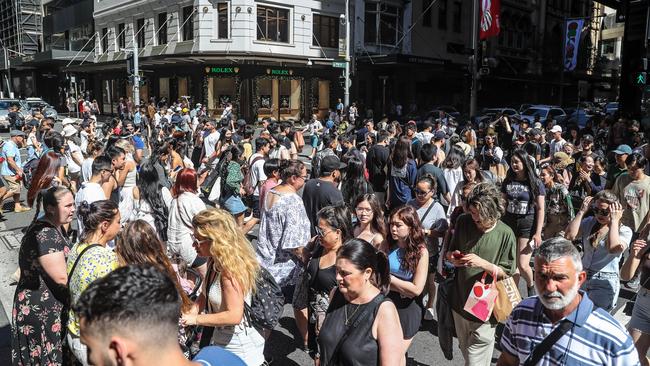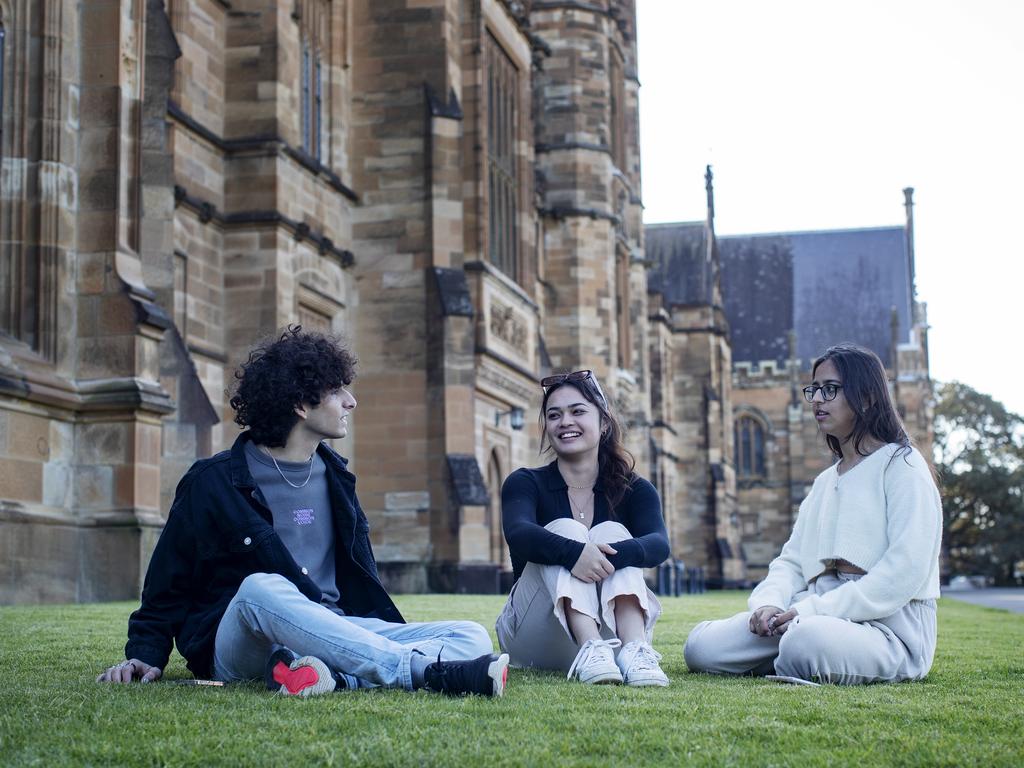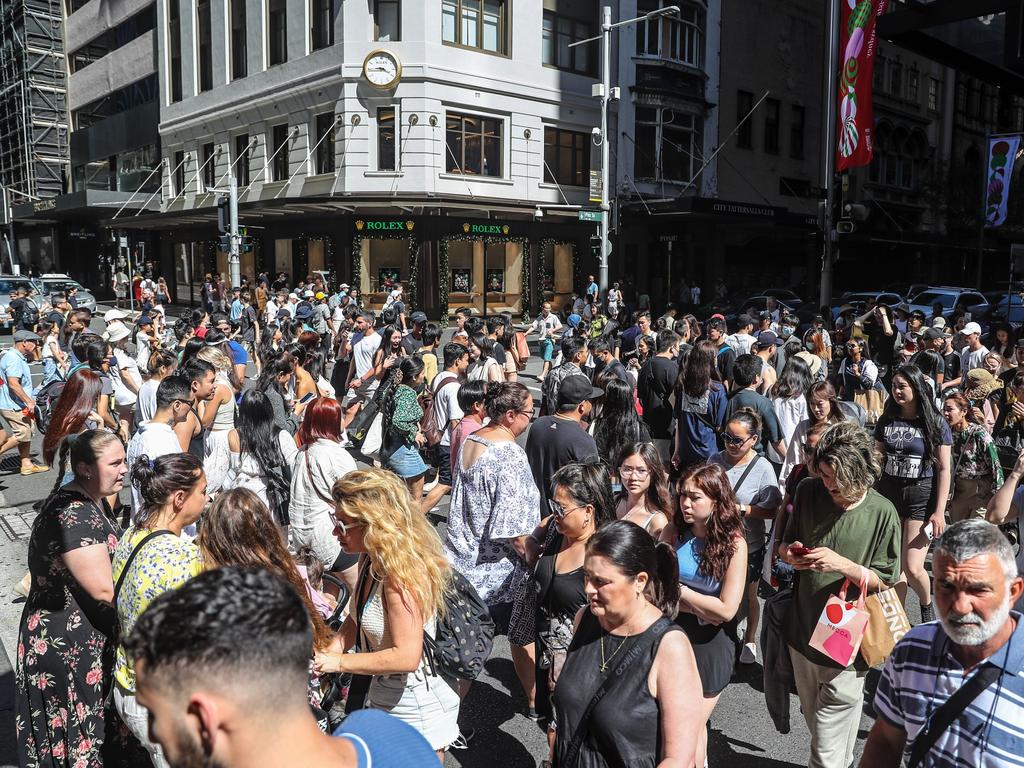Longer wait for Melbourne to overtake Sydney as Australia’s biggest city
Covid has punched a five-year hole in Melbourne’s timetable to overtake Sydney as the nation’s biggest city. And Queensland is still the go-to place.

Covid has punched a five-year hole in Melbourne’s timetable to overtake Sydney as the nation’s biggest city.
And Queensland is still the go-to place for people relocating interstate, a new study reveals.
Just two years ago, the federal government’s Centre for Population predicted 2026 would be the year when Melbourne finally knock the Harbour City off its perch as Australia’s largest. But it now believes 2031 is the likely population crossover date.
New data from the centre – ahead of the release of the government’s Population Statement on Friday – reveals Victoria’s capital has experienced the steepest decline of any capital city, with a 1.6 per cent fall.
Melbourne lost 79,000 people in the first year of Covid, mainly the result of a large drop in overseas migration as lockdowns severely restricted international travel, while Sydney lost just 25,000 people.
The flow-on effect of Covid-induced demographic changes will sap Melbourne’s momentum in its chase to wrest the population crown from Sydney.
“Melbourne is projected to overtake Sydney to become the largest city in Australia by 2031-32, with a population of 6.0 million, and then grow to 6.1 million in 2032-33,” the statement reads. Sydney’s population is projected to reach 6.06 million in 2032-33.
The Melbourne-Sydney rivalry may have dissipated in recent decades as football codes bled into both cities, businesses grew more international and good coffee became available right across the country.
But Sydney – with its famous harbour, bridge and Opera House – is more widely recognised internationally, even though Melbourne tends to finish higher in “most liveable city” lists, something Victorian Premier Dan Andrews is always happy to mention.
The new population data shows that it will still be some time before Victorians will be able to boast about their city being the biggest in the land.
Despite this rivalry, Queensland, which had a population of 5.2 million in 2021 and is expected to grow by a million more by 2033, is still the state others in Australia flock to.
About 40,000 more people came to Queensland from interstate than left in 2020-21.
“Queensland’s population is underpinned by strong net interstate migration, and so was less affected by the drop in overseas migration than the other large states,” the report states. “(It) is expected to continue to have the highest interstate migration of any state or territory.”
Overall, Australia’s population will be more than a million people short of what had been forecast by 2030, the study finds, with Covid slowing migration and fertility rates falling. The current 26 million population is now expected to hit 30 million by 2033 and 40 million by 2060.
NSW will remain the biggest state in terms of population in 2033, the statement projects, home to 9.1 million people. Victoria is projected to have a population of 7.9 million.
Jim Chalmers said the overall message from the 2022 Population Statement was “that our population is bouncing back” in the aftermath of Covid.
“A healthy, growing population is vital when it comes to creating a stronger and more prosperous economy,” the Treasurer said.
“Covid highlighted how important the wellbeing of our workforce is to Australia’s economic prosperity.”
The new data shows the stark differences in how Covid-19 affected population growth around the nation, with barely a blip in growth in Victoria’s regions, but large falls for Queensland outside of Brisbane.
“Population growth in the rest of Victoria was much stronger than in Melbourne … supported by strong internal migration in the early stages of the pandemic,” the report reveals, a reference to the many who fled Melbourne’s severe lockdown restrictions to settle in regional areas.
Western Australia’s population also held up well during the pandemic as other states decreased, with fewer people leaving the state that remained Covid free for so long. Its population is expected to grow from 2.8 million to 3.2 million in the next decade.
The report anticipates growing numbers of people will move to Tasmania from elsewhere in Australia in coming years.
“In 2023-24, (net interstate migration) is projected to return to pre-pandemic trends, with 970 interstate moves, before increasing gradually to 1700 in 2032-33,” the report states.







To join the conversation, please log in. Don't have an account? Register
Join the conversation, you are commenting as Logout